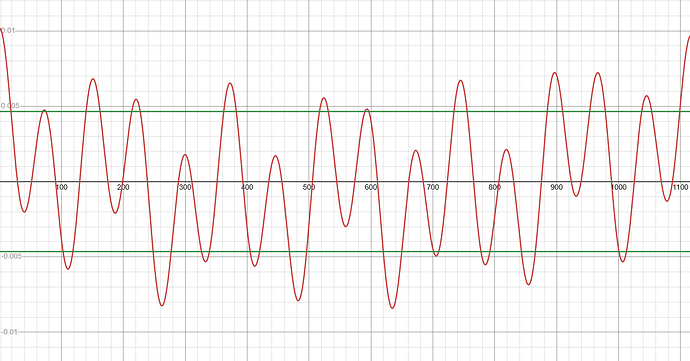This gets to be my first practical application of my vector calculus work last semester:
What we want (using the simplifying assumptions of Newtonian mechanics being accurate and constant gravity) is for a=9.803 m/s^2 straight down for any point on Earth’s surface. As F=ma and F=G(m1m2)/(r^2), we can combine those to get a=Gm1/(r^2). This Earth is radially symmetric, so we can simplify the problem to just a diameter of the circle. The overall acceleration will be the sum of the accelerations towards the center of masses of each narrow column taken through the Earth. This gives a massive-looking vector equation:

where r is Earth’s radius, f(x) is the function describing the shape of the bottom of the Earth, p(x,y) is the density function across this cross-section, and x0 is the position on the surface along the cross-section (x0=0 is the North Pole).
If we start with an assumption of constant density, this simplifies to

Solving the internal integrals gives

Solving the vector magnitude and simplifying the fractions gives

A bit more simplifying and expanding gives

Rewriting a in the form of a vector and rearranging, we get two equations
 and
and 
The first of these is much easier to solve, because the integral is irrelevant–the only function whose integral is always 0 is y=0. Having the first equation equal to 0 for any value of x0 requires either f(x)^2 = 0 or (p^2)(f(x)^4)/4=infinity. However, f(x)^2 = 0 yields an undefined value for the x-component of the acceleration if x0=x, unless p=infinity, in which case this yields an undefined magnitude of acceleration in the y-direction, but the correct direction for gravity.
In sum, the only options for a flat Earth to have gravity going exactly straight down everywhere with constant density involve an infinitely thick “disk”, an infinite density “disk”, or a disk with no area. If we allow Antarctica to have gravity slightly inwards from straight down, then the need for infinite values disappears, and the math gets much more difficult.
If we allow for a varying density function, the first equation of the set immediately above becomes

The only novel way to get gravity going exactly straight down everywhere is to have the density be negative in some places (the mass of each column of material being 0 or infinity is still required).
